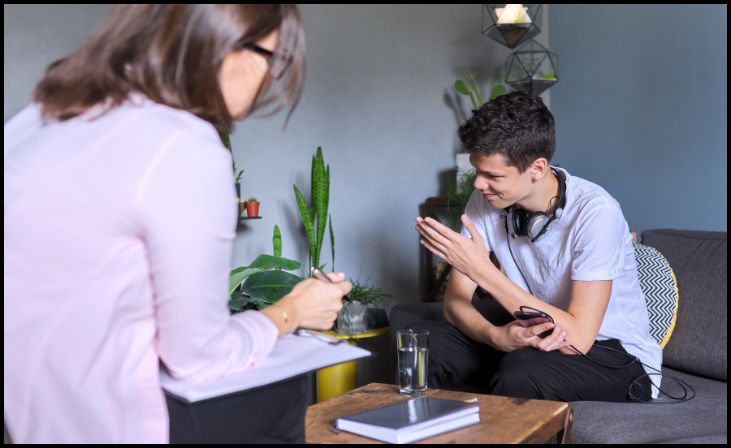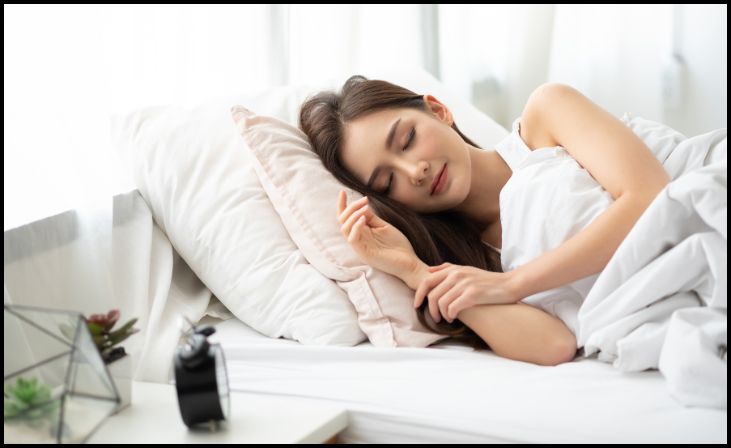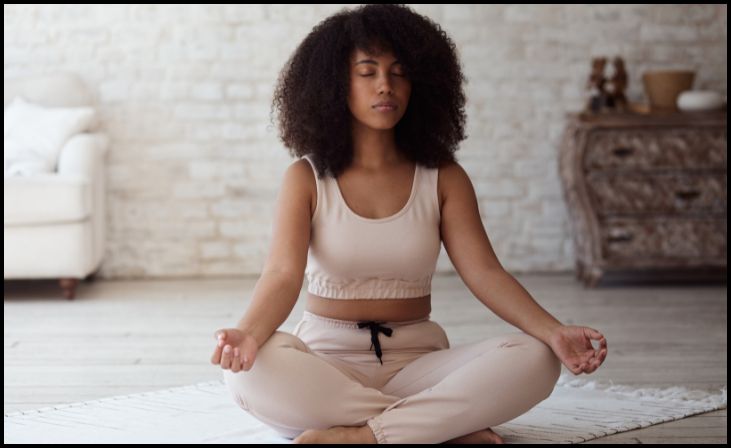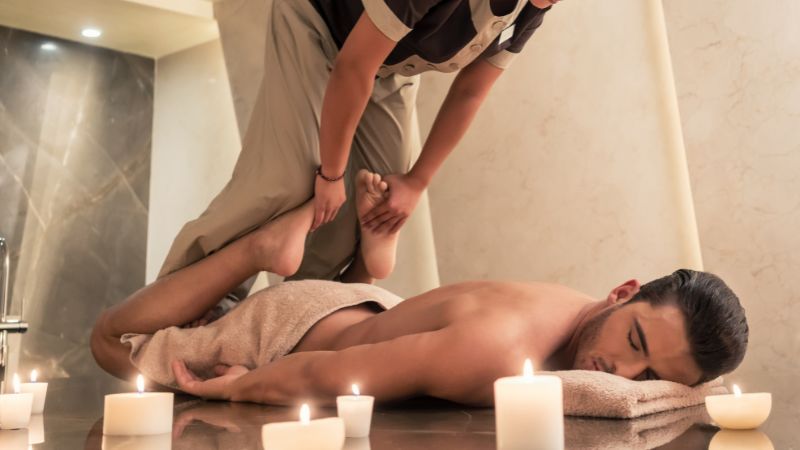In today’s fast-paced world, insomnia has become a prevalent challenge affecting millions globally. Defined by persistent difficulty falling asleep, staying asleep, or waking too early, insomnia not only disrupts daily life but also impacts overall well-being and health. While pharmaceutical solutions exist, many individuals seek effective, non-invasive therapies to address sleep disturbances more holistically.
This blog explores nine therapy techniques specifically designed to alleviate insomnia and improve sleep quality naturally. From evidence-based approaches like Cognitive Behavioral Therapy for Insomnia (CBT-I) and Mindfulness-Based Stress Reduction (MBSR) to relaxation techniques such as Progressive Muscle Relaxation (PMR) and yoga, each method offers unique benefits tailored to restoring healthy sleep patterns. By understanding and implementing these techniques, individuals can cultivate better sleep hygiene and achieve restorative sleep without solely relying on medication.
Therapy techniques for insomnia treatment
Cognitive Behavioral Therapy for Insomnia (CBT-I)

Cognitive Behavioral Therapy for Insomnia (CBT-I) is a structured therapeutic approach that addresses the underlying thoughts and behaviors contributing to sleep disturbances. Unlike traditional therapies that focus solely on sleep, CBT-I targets the cognitive and behavioral patterns affecting sleep quality. Techniques such as stimulus control aim to reassociate the bed with sleep by limiting activities like reading or watching TV in bed. Sleep restriction helps consolidate sleep by initially reducing time spent in bed, gradually increasing it as sleep efficiency improves.
Cognitive restructuring challenges negative thought patterns about sleep, promoting relaxation and reducing anxiety around bedtime. CBT-I has shown significant efficacy in clinical trials, often outperforming medication in sustaining long-term improvements in sleep patterns. Its personalized approach and focus on behavioral change make it a valuable therapy for chronic insomnia sufferers seeking lasting relief without medication dependency.
Also Read – Therapy Sessions For Depression Management
Mindfulness-Based Stress Reduction (MBSR)
Mindfulness-Based Stress Reduction (MBSR) incorporates mindfulness meditation and body awareness techniques to manage stress and promote relaxation, essential for improving sleep quality. By cultivating present-moment awareness without judgment, individuals learn to observe and let go of intrusive thoughts that can disrupt sleep. MBSR emphasizes deep breathing and progressive relaxation exercises to induce a state of calm conducive to falling asleep. Scientific studies support MBSR’s effectiveness in reducing insomnia symptoms by enhancing overall mental well-being and resilience to stress. Integrating mindfulness practices into daily routines empowers individuals to manage sleep disturbances more effectively, fostering a sustainable approach to improving sleep quality naturally.
Progressive Muscle Relaxation (PMR)
Progressive Muscle Relaxation (PMR) is a relaxation technique that involves tensing and relaxing muscle groups systematically to alleviate tension and promote physical relaxation. By deliberately tensing and then releasing muscles, PMR helps individuals become more aware of and able to release muscular tension that can interfere with falling asleep. This method encourages a deep sense of physical relaxation, which can also promote mental relaxation and ease racing thoughts. PMR is often used as part of a bedtime routine to prepare the body and mind for sleep. Regular practice of PMR has been shown to reduce insomnia symptoms and improve sleep quality over time, making it a valuable tool for those seeking non-pharmacological approaches to managing insomnia.
Biofeedback Therapy
Biofeedback therapy utilizes sensors to monitor physiological processes like heart rate variability, muscle tension, and skin temperature, providing real-time feedback to help individuals learn self-regulation techniques. By becoming aware of bodily responses associated with stress and relaxation, individuals can consciously influence these processes to promote a state of relaxation conducive to sleep. Biofeedback enhances mindfulness and self-awareness, empowering individuals to identify and mitigate factors contributing to insomnia. Studies indicate biofeedback’s effectiveness in reducing sleep onset latency and increasing sleep efficiency, making it a promising adjunct therapy for insomnia management. With continued practice and guidance from trained professionals, biofeedback empowers individuals to develop self-management skills that support long-term improvements in sleep quality.
Sleep Hygiene Education

Sleep hygiene education focuses on establishing healthy sleep habits and optimizing the sleep environment to promote restorative sleep. Key components include maintaining a consistent sleep schedule, creating a comfortable sleep environment free of distractions, and practicing relaxation techniques before bedtime. Avoiding stimulants like caffeine and nicotine close to bedtime and limiting exposure to screens emitting blue light can also enhance sleep quality. Educating individuals about the impact of lifestyle choices on sleep and providing practical strategies for improving sleep hygiene empowers them to take proactive steps in managing insomnia. By adopting good sleep hygiene practices, individuals can create conducive conditions for falling asleep easily and maintaining restful sleep throughout the night, contributing to overall health and well-being.
Acceptance and Commitment Therapy (ACT)
Sleep Restriction Therapy
A behavioral treatment for insomnia called sleep restriction therapy (SRT) starts by limiting the amount of time spent in bed in order to correspond with the actual amount of sleep that a person gets. By setting a strict sleep schedule based on sleep diary data, individuals gradually increase their sleep window as sleep efficiency improves. SRT helps strengthen the association between the bed and sleep, reducing time spent awake in bed and promoting deeper, more restorative sleep.
This structured approach enhances sleep drive and regulates circadian rhythms, promoting more consistent and satisfying sleep patterns over time. Studies support SRT’s effectiveness in reducing sleep latency and improving sleep continuity, making it a valuable therapy for individuals struggling with chronic insomnia and sleep maintenance difficulties.
Light Therapy
Light therapy involves exposure to bright light, typically from a specialized light box, to regulate circadian rhythms and improve sleep-wake cycles. By simulating natural sunlight, light therapy influences melatonin production and helps synchronize the body’s internal clock, particularly beneficial for individuals with circadian rhythm disorders or seasonal affective disorder (SAD). Timed exposure to light therapy in the morning can help reset the sleep-wake cycle, promoting alertness during the day and facilitating earlier onset of sleep at night.
Light therapy is a non-invasive treatment option with minimal side effects, offering a promising adjunct to traditional insomnia therapies. Proper timing and duration of light exposure are crucial for maximizing therapeutic benefits, making light therapy a valuable tool in comprehensive insomnia management strategies.
Yoga and Relaxation Techniques

Yoga incorporates physical postures, breathing exercises, and meditation to promote relaxation and enhance overall well-being, making it a beneficial practice for improving sleep quality. Certain yoga poses, such as forward bends and gentle inversions, can induce a calming effect on the nervous system, preparing the body for sleep. Breathing techniques, or pranayama, focus on deep, diaphragmatic breathing to calm the mind and reduce physiological arousal that can interfere with sleep onset.
Integrating yoga and relaxation techniques into daily routines helps individuals manage stress, quiet the mind, and promote relaxation conducive to falling asleep naturally. Regular practice of yoga has been shown to improve sleep quality and reduce insomnia symptoms, offering a holistic approach to enhancing sleep health and overall quality of life.
Acceptance and Commitment Therapy (ACT) blends mindfulness strategies with behavioral techniques to promote psychological flexibility and resilience in managing insomnia. By accepting thoughts and feelings without judgment, individuals learn to reduce the struggle against insomnia-related distress, fostering a sense of psychological acceptance. ACT encourages individuals to identify and commit to values-aligned actions that support better sleep, such as establishing consistent bedtime routines and practicing relaxation exercises. Through mindfulness exercises and experiential techniques, ACT empowers individuals to detach from unhelpful thoughts and behaviors that perpetuate insomnia, promoting adaptive coping strategies and improving overall sleep quality.
Also Read – Therapy vs Medication
Conclusion
In conclusion, addressing insomnia through therapy techniques offers a holistic approach that emphasizes behavioral changes, mindfulness, and relaxation. Cognitive Behavioral Therapy for Insomnia (CBT-I) stands out for its evidence-based effectiveness in reshaping sleep behaviors and thought patterns. Mindfulness-Based Stress Reduction (MBSR) and Progressive Muscle Relaxation (PMR) promote relaxation and reduce stress, crucial for improving sleep quality. Biofeedback therapy enhances self-awareness and physiological regulation, while sleep hygiene education educates individuals on optimizing their sleep environment and habits. Acceptance and Commitment Therapy (ACT) fosters psychological flexibility in managing insomnia-related distress.
Sleep Restriction Therapy (SRT) and light therapy target circadian rhythms, promoting healthier sleep-wake cycles. Finally, yoga and relaxation techniques offer gentle, holistic approaches to calming the mind and body before sleep.
FAQs
Are therapy techniques for insomnia suitable for everyone?
Therapy techniques can benefit many individuals with insomnia, but personalized guidance from healthcare professionals ensures the most effective and safe approach.
How long does it take to see improvements with therapy techniques?
Results vary, but many people experience noticeable improvements within several weeks of consistent practice and implementation of therapy techniques.
Can therapy techniques replace medication for treating insomnia?
For some individuals, therapy techniques may provide sufficient relief without medication. It’s essential to discuss options with a healthcare provider to determine the best course of treatment based on individual circumstances.




